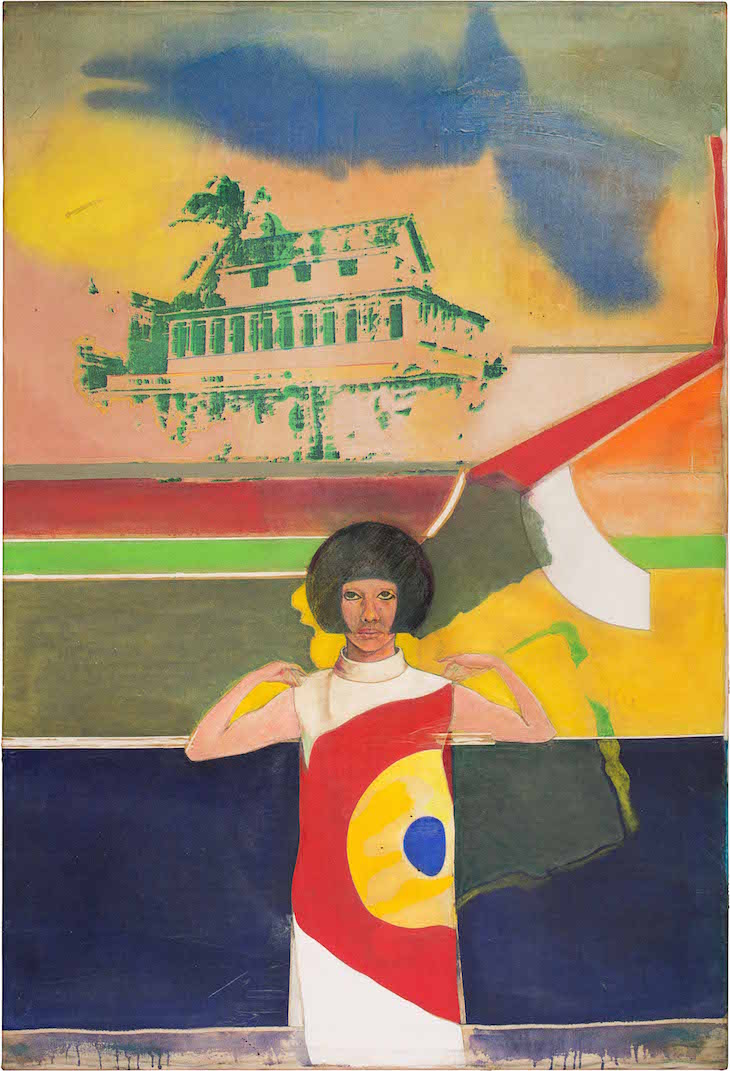This retrospective ranges from the stencilled map paintings of the 1960s to recent sculptural canvases, highlighting Bowling’s experiments with paint, as well as his exploration of the role of black artists in the post-colonial era. Find out more from the Tate’s website.
Preview the exhibition below | View Apollo’s Art Diary here

Cover Girl (1966), Frank Bowling. © Frank Bowling. All Rights Reserved, DACS 2019
Born in British Guyana, Bowling moved to London in 1953. He earned a scholarship to study at the Royal College of Art, where from 1959–62 he trained alongside R.B. Kitaj and David Hockney. Primarily figurative works of the 1960s, such as Cover Girl, bear witness to Bowling’s interest in the Pop art movement; but the background here, with its stained fields of colour – including red, green and yellow, alluding to the flag of Guyana – hints at later abstract works.

South America Squared (1967), Frank Bowling. © Frank Bowling. All Rights Reserved, DACS 2019
Moving to New York in 1966, Bowling became involved in the Civil Rights Movement, writing a number of influential articles about ‘Black Art’. It was around this time that he began producing his ‘map paintings’. Created using stencilled outlines of Australia, South America and Africa, these canvases – ten of which are on display in the exhibition – continued Bowling’s experiments with colour field painting while raising themes of displacement and identity in a post-colonial world.

Great Thames IV (1988–89), Frank Bowling. © Frank Bowling. All Rights Reserved, DACS 2019
As his career has progressed, Bowling has become increasingly concerned with the processes and material aspects of painting itself, frequently disrupting the surface of the canvas with three-dimensional elements. Here, the uneven surface evokes the glistening, rolling body of the Thames; the painting also hints at Bowling’s debt to the English landscape tradition.

Iona Miriam’s Christmas Visit To & From Brighton (2017), Frank Bowling. © Frank Bowling. All Rights Reserved, DACS 2019
Memory, both personal and historical, is an important theme in Bowling’s work. Some of the titles of his works evoke moments of family life; the exhibition includes Sacha Jason Guyana Dreams (1989), inspired by Bowling’s first trip to Guyana with his son Sacha, while this recent painting records a Christmas visit with his stepdaughter.











![Masterpiece [Re]discovery 2022. Photo: Ben Fisher Photography, courtesy of Masterpiece London](http://www.apollo-magazine.com/wp-content/uploads/2022/07/MPL2022_4263.jpg)
The threat to Sudan’s cultural heritage